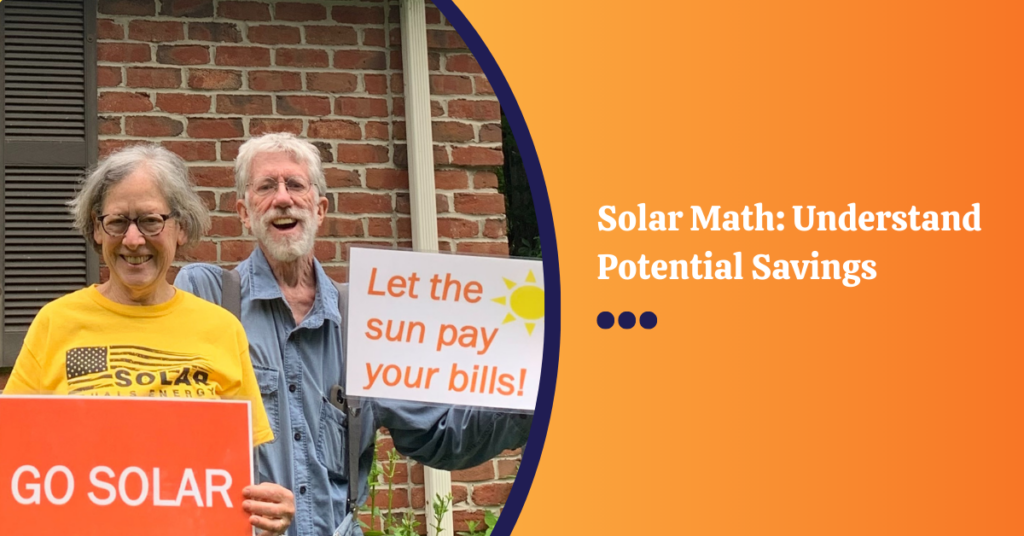Do Solar Math: Understand Potential Savings

Harnessing the sun’s power to reduce your energy bills and become energy-independent sounds like a win-win, but is it too good to be true? If you’re interested in solar but don’t know how to calculate your return on the initial investment, we can help. Let’s crunch the numbers together and explore how solar math can save you money with a clean energy source.
Remember, the Solar Help Desk is another great resource to answer your questions.
Calculating your solar investment
The first step in your solar journey is understanding the costs involved. Solar installations are priced by the watt. Nationally, the average installation cost is around $3.00/watt. A system for your home typically comes in between 4,000–8,000 watts. That means an installation will cost between $12,000 to $24,000.
While that might sound like a significant investment, you’ll want to factor in federal tax credits (30%) and other incentives that will significantly reduce the cost. You should also explore the local incentives available in your area. You can find a comprehensive list of incentives specific to your state here.
Solar Math
Doug’s is getting 6,000 Watts.
6,000 W X $3.000 (cost per W) = $18,000 Total Cost
Now, let’s adjust this cost to account for the 30% tax credit.
$18,000(Total Cost) x .30 (Tax Incentive) = $5,400 in Tax Credits
$18,000 (Total Cost) – $5,400 (Tax Credit) = $12,600 Adjusted Cost
This means that Doug’s total investment is $12,600.

Your specific costs will depend on:
- the size of your system,
- the equipment you use, and
- the local solar market.
Your solar installer can tailor options to match your budget and preferences. Financing options may allow you to start saving right away with minimal upfront costs.
Solar savings over time = Return on investment
Solar panels generate electricity that can substantially reduce your monthly utility bills. Over time, these savings will offset your upfront costs, resulting in a payback period typically ranging from four to 12 years, depending on market conditions and system performance.
Consider this: Once you’ve paid off your initial investment your savings go directly into your pocket. With a system lifespan of 25–30 years, we’re talking serious long-term savings. Additionally, solar panels increase your home’s value, a fact highlighted by a 4.1% higher selling price compared to non-solar homes.
Solar math
Let’s see how much Doug is saving after 25 years with his rooftop solar panels.
Doug’s Initial investment was $12,600.
With estimated savings of $1,500 / year (Forbes), Doug paid for this in savings after 8.5 years.
25 years – 8.5 to pay off his initial investment = 16.5 years remaining to rack up solar savings.
16.5 (years remaining) x $1,500 (savings per year) = $24,750
That means that Doug got nearly $25,000 return on his investment,
plus the added value to his home!
Other factors that influence savings
Beyond the basics, several factors can influence your solar savings — including local electric prices; the size of your system, how much electricity your family uses, and average sun exposure. Understanding these variables can help you maximize the benefits of your solar investment.
As you embark on your solar journey, remember that going solar doesn’t just save you money. It gives you energy independence with a clean energy source. So, take the leap and embrace the sun’s power with rooftop solar!
